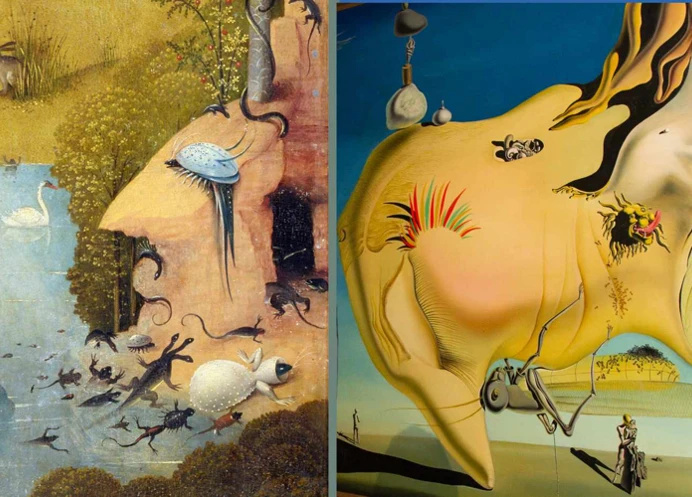Step into the mysterious and captivating world of Surrealism, an art movement that revolutionized the way we perceive reality and explore the depths of our subconscious minds. Surrealism emerged in the early 20th century, driven by a collective desire to break free from conventional artistic boundaries and delve into the realm of dreams and the unconscious. In this article, we will journey through the origins of Surrealism, delve into its philosophy, explore the techniques used by Surrealist artists, analyze its influence on dream-inspired art, highlight notable Surrealist artists, and discuss the lasting legacy of this captivating movement. Get ready to discover the enchanting world of Surrealism and unlock the secrets of the unconscious mind.
The Origins of Surrealism
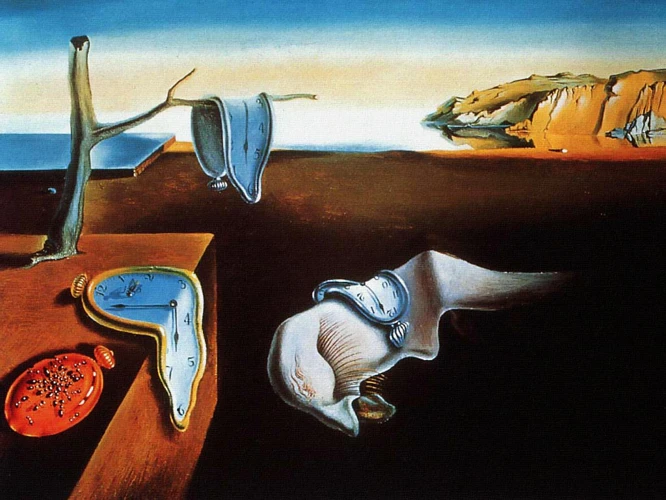
Dive into the enigmatic origins of Surrealism, a groundbreaking art movement rooted in unconventional thinking and the exploration of the subconscious mind. Surrealism was heavily influenced by various factors, including the theories of Sigmund Freud and the Dada movement. Artists such as Max Ernst and André Breton drew inspiration from Freud’s idea that dreams were windows to the unconscious, where repressed desires and fears resided. These early influences laid the foundation for the Surrealist movement, culminating in the publication of the Surrealist Manifesto by Breton in 1924. The movement sought to liberate the creative process from rational constraints and embrace the power of the irrational and the absurd. Surrealist artists explored the uncharted territories of the human psyche, creating intriguing and otherworldly artworks that challenged societal norms. This emergence of Surrealism sent shockwaves through the art world, revolutionizing the way we perceive reality and paving the way for dream-inspired art. Curious about the influence of dreams on art? Check out this fascinating article on the power of dreams in art.
1.1 Early Influences
The development of Surrealism was shaped by a diverse range of early influences that helped shape its unique artistic vision. One of the major influences on the Surrealist movement was the psychological theories of Sigmund Freud. Freud’s exploration of the unconscious mind, dream analysis, and his concept of the “id” fascinated Surrealist artists and provided them with a framework to explore the hidden depths of the human psyche. The Dada movement, known for its rejection of traditional art and embrace of radical absurdity, also played a significant role in the development of Surrealism. The chaotic and nonsensical nature of Dadaism served as a catalyst for Surrealist artists to challenge societal norms and explore the irrational and the subconscious. Additionally, the works of Symbolist poets and painters, such as Charles Baudelaire and Odilon Redon, influenced Surrealists with their emphasis on imagination, mysticism, and the dream-like quality of their art. These early influences laid the groundwork for the emergence of Surrealism as a movement that sought to push the boundaries of artistic expression and delve into the hidden recesses of the human mind. Want to learn more about how dreams have continued to influence contemporary art? Check out this intriguing article on exploring dream themes in contemporary art.
1.2 Founding of the Movement
The founding of the Surrealist movement marked a pivotal moment in the history of art. Led by André Breton, a French writer and poet, Surrealism emerged as a response to the chaos and disillusionment brought about by World War I. In 1924, Breton published the Surrealist Manifesto, which outlined the movement’s aims and principles. The manifesto declared Surrealism’s intent to explore the realm of the subconscious and embrace the power of dreams, instincts, and irrationality. Breton viewed Surrealism as a means to reconcile the conscious and unconscious, the real and imaginary. He believed in the transformative power of art and saw it as a tool for revolutionizing society and liberating the human mind. The Surrealist movement attracted artists from various disciplines, including painters, writers, sculptors, and filmmakers. Together, they sought to push the boundaries of artistic expression and challenge societal norms. Through their collaborative efforts and innovative approaches, the Surrealists paved the way for dream-inspired art to flourish. Intrigued by how artists draw inspiration from dreams? Check out this insightful article on dream journals as a source of artistic inspiration.
The Philosophy of Surrealism
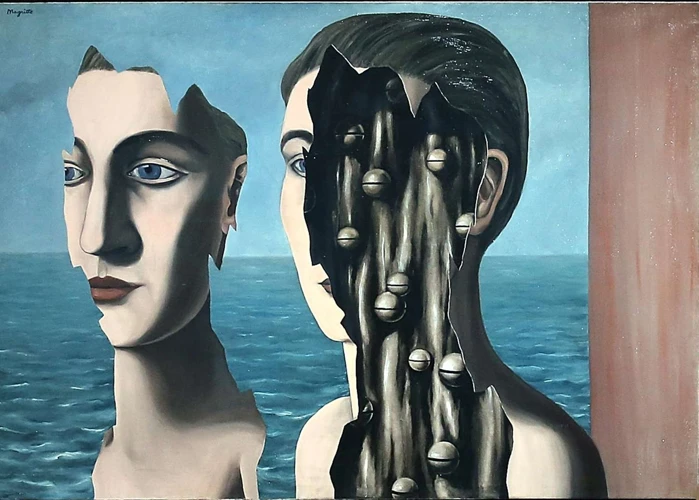
Delve into the mesmerizing philosophy behind the Surrealist movement, which aimed to channel the power of dreams and the subconscious in creating revolutionary works of art. Surrealists believed that dreams held profound meaning and offered a portal to explore the hidden recesses of the human psyche. They viewed the unconscious mind as a wellspring of creativity and sought to tap into its depths to challenge societal norms and conventional thinking. Surrealist artists embraced the irrational, the fantastical, and the absurd, aiming to disrupt the logical order and rationality of the world. Through their art, they aimed to liberate the mind, evoke emotions, and provoke introspection. Surrealism emboldened artists to embrace their imaginative faculties and embrace the irrational nature of existence. This captivating philosophy continues to inspire contemporary artists who seek to fuse reality and fantasy, explore the depths of the subconscious, and challenge our perceptions of the world.
2.1 Dreams as a Gateway to the Unconscious
Dreams have long been regarded as a fascinating and mysterious phenomenon, but for Surrealists, they held a special significance as a gateway to the unconscious mind. Surrealism embraced the belief that dreams were not just random images and events, but rather symbolic expressions of the deepest desires, fears, and unresolved conflicts residing within the human psyche. By tapping into the rich tapestry of dreams, Surrealist artists sought to unveil hidden emotions and explore the uncharted territories of the subconscious. This emphasis on dreams as a gateway to the unconscious led them to embrace techniques such as automatism and stream of consciousness in their artistic process. Through these techniques, artists aimed to bypass reason and logic, allowing the subconscious to take control and guide their creative output. Surrealists believed that by accessing the untamed realm of dreams, they could tap into a wellspring of untapped creativity and unearth profound insights about the human condition. The Surrealist movement reveled in the enigmatic and bizarre nature of dreams, finding inspiration in their distorted perspectives, strange juxtapositions, and illogical narratives. Through their exploration of dreams as a gateway to the unconscious, Surrealists transcended the boundaries of traditional art, pushing the limits of imagination and paving the way for a new era of artistic expression.
2.2 The Role of Surrealist Artists
Surrealist artists played a pivotal role in shaping and defining the movement. They were not only skilled creators but also pioneers and rebels, challenging societal norms and traditional artistic techniques. The role of Surrealist artists extended far beyond simply creating aesthetically pleasing artworks. They sought to tap into the depths of the unconscious mind, channeling their dreams, desires, and fantasies into their creations. Surrealist artists believed that by accessing the realm of dreams and the subconscious, they could uncover profound truths about the human condition and challenge established norms. They aimed to disrupt the rational and predictable nature of reality, instead embracing the irrational and the absurd. Through their artworks, Surrealist artists aimed to provoke emotions, shock the viewer’s senses, and spark introspection. They employed various techniques such as automatism, stream of consciousness writing, and chance-based methods to access the subconscious and unleash their creative potential. Notable Surrealist artists such as Salvador Dalí, René Magritte, and Frida Kahlo pushed the boundaries of artistic expression, creating mesmerizing and thought-provoking works that continue to captivate audiences to this day. Surrealist artists indeed played a crucial role in not only redefining art but also challenging societal norms and expanding our perception of reality.
The Techniques of Surrealist Art
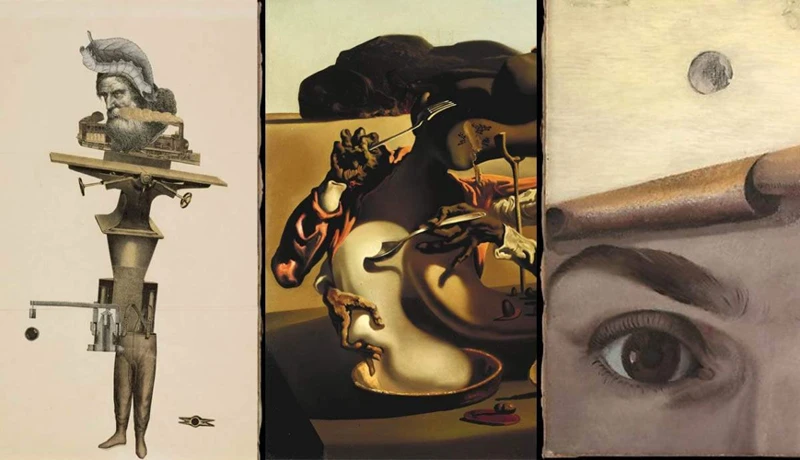
The techniques employed by Surrealist artists were as unconventional and imaginative as the movement itself. One distinctive method utilized by Surrealists was automatism and stream of consciousness. This technique involved creating artwork without conscious thought or control, allowing the subconscious mind to guide the artist’s hand. Artists would surrender themselves to the spontaneous flow of ideas, resulting in dream-like and unpredictable compositions. Another technique embraced by Surrealists was collage and assemblage, where disparate elements were combined to create new and unexpected narratives. By juxtaposing unrelated objects and images, artists aimed to challenge traditional notions of reality and create a sense of visual dissonance. Additionally, Surrealists employed the technique of juxtaposition and transformation, manipulating and distorting everyday objects and figures to reveal hidden meanings and evoke a sense of irrationality. These inventive techniques allowed Surrealist artists to bring forth the fantastical and subconscious realms into their works, transcending conventional artistic boundaries. Unlock the secrets behind the techniques of Surrealist art and explore more about dream-inspired art in contemporary art by reading this compelling article exploring dream themes in contemporary art.
3.1 Automatism and Stream of Consciousness
Automatism and Stream of Consciousness are two significant techniques used by Surrealist artists to tap into the deep realms of the subconscious mind. Automatism involves creating artwork without conscious control, allowing the hand to freely move across the page or canvas. This technique aims to bypass logical thought processes and tap into the spontaneous and intuitive nature of the artist’s subconscious. Artists such as André Masson and Joan Miró employed this method to access their innermost thoughts and desires.
On the other hand, Stream of Consciousness is a literary technique that was also adapted by Surrealist artists. It involves capturing the continuous flow of thoughts, feelings, and sensations without following a strict linear or structured narrative. Surrealist painters, such as Salvador Dalí, would paint in a trance-like state, allowing their brushstrokes to flow freely and unrestricted. The resulting artwork often presented disjointed or fragmented imagery, mirroring the chaotic nature of the subconscious mind.
These techniques enabled Surrealist artists to bypass the conscious mind and tap directly into the unfiltered depths of the unconscious. By embracing Automatism and Stream of Consciousness, they were able to create artworks that revealed hidden desires, fears, and unexplored psychological associations. The use of these techniques not only challenged traditional artistic principles but also pushed the boundaries of self-expression and the exploration of the human psyche.
To delve into the world of Surrealist artists and their works inspired by Automatism and Stream of Consciousness, visit our exploring dream themes in contemporary art article.
3.2 Collage and Assemblage
Collage and assemblage are two key techniques employed by Surrealist artists to create thought-provoking and visually striking artworks.
Collage involves combining various materials, such as photographs, newspaper clippings, fabric, and found objects, to construct a new composition. By juxtaposing seemingly unrelated elements, Surrealist artists aimed to challenge traditional notions of reality and create a sense of disorientation. The collages often featured fragmented and disjointed imagery, mirroring the unpredictable nature of dreams and the unconscious mind. Artists like Max Ernst and Hannah Höch embraced collage as a means of exploring the absurd and the irrational. Ernst’s famous work, “The Elephant Celebes,” showcases an amalgamation of disparate images, including an elephant, a rubber glove, and Greek columns, inviting viewers into a realm where logic and reason hold no sway.
Assemblage, on the other hand, involves assembling found objects or ready-made materials into a three-dimensional composition. Surrealist artists embraced assemblage as a way to transform ordinary objects into something extraordinary, imbuing them with new meanings and narratives. The combination of objects with unrelated functions created a sense of ambiguity and encouraged viewers to question their preconceived notions. Salvador Dalí’s iconic artwork, “The Persistence of Memory,” features melting clocks draped over various objects, evoking a sense of timelessness and the fluidity of the dream state.
Both collage and assemblage allowed Surrealist artists to tap into the subconscious and explore the uncanny nature of dreams. These techniques provided a platform for combining seemingly contradictory elements and liberating the imagination from the constraints of rational thought. By embracing the unexpected and challenging traditional artistic norms, Surrealists created a visual language that continues to captivate and inspire audiences today.
3.3 Juxtaposition and Transformation
Juxtaposition and transformation are two key techniques employed by Surrealist artists that played a significant role in the creation of their dream-inspired artworks. Through the juxtaposition of unrelated or contrasting elements, Surrealist artists aimed to create a sense of surprise and provoke new associations in the viewer’s mind. This technique often involved placing unrelated objects or figures together in unexpected ways, challenging traditional notions of reality and creating a sense of disorientation. By juxtaposing the familiar with the unfamiliar, artists sought to express the subversive and illogical nature of dreams.
Transformation was another technique used by Surrealist artists to depict the fluidity and metamorphosis inherent in dreams. Through the transformation of forms, objects, or figures, artists could convey the ever-shifting nature of the unconscious mind. Mirroring the transitory and mutable states of dreams, transformation allowed Surrealist artists to blur the boundaries between different elements, creating a sense of ambiguity and mystery. Objects would morph into other objects, human figures would intertwine with nature, and familiar shapes would dissolve into abstract forms. This technique not only captured the hallucinatory quality of dreams but also encouraged viewers to question their preconceived notions of reality.
To illustrate these techniques further, Surrealist artists often incorporated visual elements such as unexpected combinations of objects, distorted perspectives, and surreal landscapes into their artworks. The use of vibrant and unconventional color palettes further enhanced the dreamlike quality of their pieces. Salvador Dalí, for example, frequently employed juxtaposition and transformation in his paintings, combining everyday objects with fantastical elements and distorting proportions to create a sense of unease and intrigue. René Magritte, on the other hand, used juxtaposition to challenge the viewer’s perception of reality by placing ordinary objects in unusual contexts. His iconic painting “The Treachery of Images,” featuring a pipe with the caption “Ceci n’est pas une pipe” (This is not a pipe), demonstrates the power of juxtaposition in his art.
Juxtaposition and transformation were integral techniques used by Surrealist artists to convey the ineffable and surreal nature of dreams. These techniques allowed artists to break free from the constraints of reality and explore the limitless possibilities of the unconscious mind. Through the unexpected juxtaposition of unrelated elements and the transformation of forms, Surrealist artworks continue to captivate audiences with their ability to provoke thought and challenge conventional understanding.
Influence on Dream-inspired Art
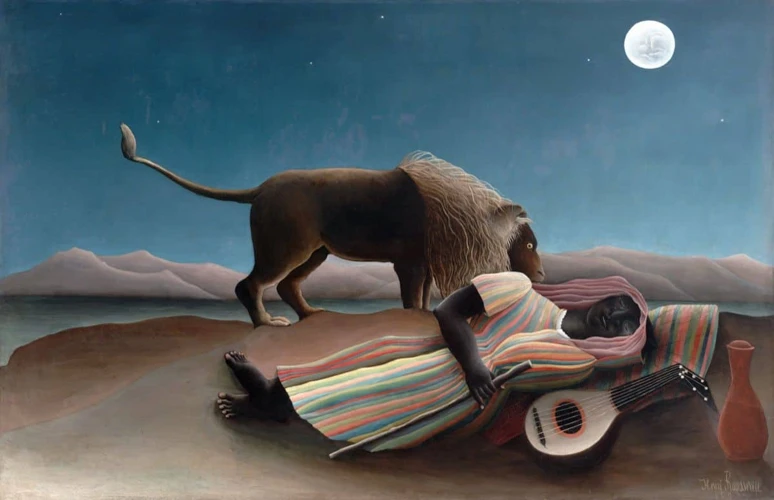
The Surrealist movement had a profound influence on dream-inspired art, ushering in a new era of artistic expression that pushed the boundaries of imagination. Surrealist artists believed that dreams held valuable insights into the human psyche and sought to capture the vividness and symbolism of dreams in their artworks. The manifestation of Surrealism in dreams allowed artists to tap into a realm of unbridled creativity, where logic and reason took a backseat to the fantastical and the subconscious. Surrealist art often featured dream-like landscapes, distorted figures, and surreal juxtapositions that challenged conventional notions of reality. The themes and motifs explored in dream-inspired art were vast and diverse, encompassing desires, fears, anxieties, and social commentary. This artistic movement paved the way for contemporary artists to continue exploring the realm of dreams and the unconscious, creating thought-provoking and visually captivating works. Whether it’s Salvador Dalí’s melting clocks or Frida Kahlo’s symbolic self-portraits, the influence of Surrealism on dream-inspired art continues to captivate and intrigue audiences to this day.
4.1 Surrealist Manifestation in Dreams
Surrealist Manifestation in Dreams (4.1)
Surrealism’s fascination with dreams extended beyond mere inspiration; it sought to actively manifest the mysterious and illogical nature of dreams in its artworks. Surrealist artists believed that dreams offered a direct connection to the unconscious mind, where they could access deep-seated desires, fears, and fantasies. By tapping into the realm of dreams, they aimed to bypass rationality and embrace the irrational and intuitive aspects of human experience.
One method employed by Surrealist artists to explore the realm of dreams was automatic writing, a technique where they would write or draw without conscious thought or censorship. This allowed the subconscious to flow freely, revealing unfiltered thoughts and images. The writings and sketches produced in this state often served as a visual diary of the artists’ dream experiences.
Another influential practice was the creation of dream journals, where Surrealists meticulously recorded their dreams upon awakening. These journals served as a treasure trove of imagery and ideas, which were later translated into visual art. The Surrealists believed that dreams held hidden meaning and symbols, and by delving into their own dreams, they could unlock the mysteries of the unconscious.
The Surrealist Manifestation in Dreams often involved the portrayal of bizarre and fantastical scenes, where objects and figures would undergo surreal transformations. These dreamlike landscapes blurred the boundaries between reality and imagination, challenging the viewer to question their own perceptions. By depicting the irrational and unexpected aspects of dreams, Surrealist artists aimed to disrupt conventional thinking and explore the depths of the human psyche.
Surrealism’s fascination with dreams went beyond mere inspiration. It actively sought to manifest the illogical and mysterious nature of dreams in its artworks. Through techniques like automatic writing and dream journaling, Surrealists tapped into the depths of the unconscious mind, bringing forth bizarre and fantastical imagery that challenged conventional perceptions. The Surrealist Manifestation in Dreams served as a powerful tool for exploring the depths of the human psyche and pushing the boundaries of artistic expression.
4.2 Surrealist Themes and Motifs in Dream-inspired Art
One of the most fascinating aspects of Surrealism is its profound influence on dream-inspired art. Surrealist themes and motifs have permeated the realm of artistic expression, captivating viewers with their uncanny and thought-provoking imagery. In dream-inspired art, Surrealism provides a rich tapestry of ideas and concepts that delve into the subconscious and challenge the boundaries of reality.
One common theme found in dream-inspired art influenced by Surrealism is the juxtaposition of seemingly unrelated objects or entities. This technique creates a sense of dissonance and surprise, as everyday objects take on new and unexpected meanings. The works of Salvador Dalí exemplify this theme with his famous melting clocks in “The Persistence of Memory,” where the concept of time is distorted and rendered fluid.
Another recurring motif in dream-inspired art influenced by Surrealism is the use of symbolism and metaphor. By employing symbolic elements, artists evoke deep emotions and explore complex ideas. For instance, René Magritte’s famous painting, “The Treachery of Images,” featuring a realistic depiction of a pipe with the inscription “Ceci n’est pas une pipe” (This is not a pipe), challenges the viewer’s perception and the relationship between an object and its representation.
Dream-like landscapes and surreal environments are also prevalent in Surrealist-inspired art. Artists often depict dreamscapes that defy the laws of nature and logic, offering viewers a glimpse into a world of imagination and exploration. Frida Kahlo’s self-portraits often incorporated dream-like elements, combining her personal experiences with symbolic imagery.
Additionally, automatic drawing and stream of consciousness techniques commonly associated with Surrealism find their way into dream-inspired art. Artists allow their thoughts to flow freely, tapping into their unconscious mind and creating artworks that capture the essence of dreams. These works often exhibit spontaneity, with fluid lines and fragmented imagery that reflect the elusive nature of dreams.
Surrealism provides a rich well of themes and motifs for dream-inspired art. Juxtaposition, symbolism, dreamscapes, and automatic techniques all play a significant role in exploring the realm of dreams and the subconscious. By incorporating these elements, artists create captivating and evocative artworks that transport viewers to a world where reality is blurred, and imagination reigns supreme.
Notable Surrealist Artists
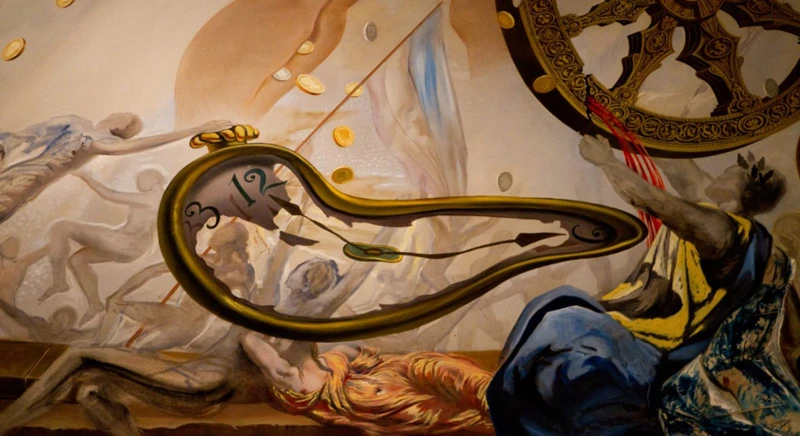
Immerse yourself in the captivating world of Surrealist art and discover the work of some of its most notable artists. One of the most iconic figures in Surrealism is Salvador Dalí, known for his eccentric personality and surreal imagery. Dalí’s paintings, such as “The Persistence of Memory,” evoked a sense of dreamlike disorientation and challenged conventional notions of reality. Another influential artist of the movement is René Magritte, whose work often featured juxtapositions of ordinary objects in unexpected ways, inviting viewers to question the meaning of perception and representation. Frida Kahlo, although not officially part of the Surrealist movement, also explored themes of dreams and the unconscious in her art, often depicting her innermost thoughts and emotions. From Dalí’s melting clocks to Magritte’s floating bowler hats, these artists pushed the boundaries of imagination and left an indelible mark on the world of art.
5.1 Salvador Dalí
Salvador Dalí, one of the most iconic figures of the Surrealist movement, is renowned for his innovative and bizarre artworks that pushed the boundaries of imagination. Born in Spain in 1904, Dalí’s unique artistic style combined meticulous attention to detail with fantastical imagery. He embraced the concept of “critical paranoia,” where he sought to explore the irrational and dreamlike aspects of the human mind. Dalí’s works often featured melting clocks, distorted figures, and dreamlike landscapes, alluding to the fragile nature of time and the subconscious. One of his most famous works, “The Persistence of Memory,” encapsulates the essence of Surrealism with its surreal and hallucinatory elements. His meticulous technique known as “hand-painted dream photographs” showcased his ability to manifest the most intricate details from his imagination onto canvas. Dalí’s art aimed to provoke emotions and challenge societal norms, leading to a wide range of interpretations from viewers. His profound influence on dream-inspired art cannot be overstated, serving as a beacon for future generations of artists seeking to explore the depths of the subconscious mind. Through his daring and provocative creations, Dalí continues to captivate audiences and leave a lasting legacy in the world of surreal art.
5.2 René Magritte
René Magritte, a prominent Belgian Surrealist artist, is known for his thought-provoking and visually striking paintings. Magritte’s unique style and exploration of paradoxes and the nature of reality continue to captivate audiences today. One of his most famous paintings, “The Treachery of Images,” depicts a realistic pipe with the words “Ceci n’est pas une pipe” (This is not a pipe) written underneath it. This iconic work challenges the notion of representation and prompts viewers to question the relationship between an object and its representation. Magritte’s use of juxtaposition and transformation in his art creates a sense of mystery and ambiguity that draws viewers into a world of surrealism. Through his meticulous attention to detail and masterful technique, Magritte created art that defied expectations and pushed the boundaries of the ordinary. His works continue to inspire and influence artists across various mediums, leaving a lasting impact on the world of surrealism and beyond.
5.3 Frida Kahlo
Frida Kahlo, a renowned Mexican artist, made significant contributions to the Surrealist movement with her bold and introspective works. Born in 1907, Kahlo experienced immense physical and emotional pain throughout her life, which heavily influenced her art. Her paintings often depicted her own physical suffering, exploring themes of identity, gender, and the human condition. While Kahlo’s work is not traditionally classified as Surrealism, her use of symbolism and dream-like elements aligns with the movement’s principles. In her self-portraits, Kahlo depicted herself in surreal and fantastical settings, merging reality with imagination. By incorporating personal symbolism, such as animals, plants, and Mexican folklore, Kahlo delved into her own psyche and confronted her innermost fears and desires. Her art was a means of self-reflection and catharsis, enabling her to transcend her physical limitations and express her emotion. Kahlo’s unique approach to Surrealism, infused with her personal experiences, has left a profound impact on the art world and continues to inspire artists today.
The Lasting Legacy of Surrealist Art
The impact of Surrealist art reverberates through the annals of art history, leaving behind a lasting legacy that has influenced subsequent generations of artists. Surrealism shattered traditional norms and embraced the power of the imagination, pushing the boundaries of artistic expression. Its emphasis on dreamlike imagery, symbolism, and the subconscious sparked a revolution in contemporary art. Surrealism continues to inspire and captivate artists today, with its influence evident in various forms of creative expression, including literature, film, and fashion. The works of renowned Surrealist artists such as Salvador Dalí, René Magritte, and Frida Kahlo continue to mesmerize and bewilder audiences, their artistic visions transcending time. Surrealism has also embedded itself in popular culture, manifesting in music, advertising, and even video games. The enduring presence of Surrealist art serves as a testament to its enduring impact, inviting viewers to step into a world where reality and dreams intertwine.
6.1 Surrealism’s Impact on Contemporary Art
Surrealism’s impact on contemporary art cannot be overstated. The movement’s innovative techniques and thought-provoking concepts have left a lasting impression on artists working in various mediums today. One of the key ways in which Surrealism has influenced contemporary art is through its emphasis on exploring the subconscious and the realm of dreams. Many contemporary artists continue to draw inspiration from the Surrealist belief that dreams offer a gateway to hidden desires, fears, and emotions. By tapping into the unconscious mind, artists are able to create works that challenge our perception of reality and push the boundaries of traditional artistic expression.
In addition to the thematic influence, Surrealism has also left a significant mark on artistic techniques. Surrealist artists embraced techniques such as automatism and stream of consciousness, which allowed for spontaneous and unrestricted creation. This approach has inspired contemporary artists to experiment with improvisation and explore the subconscious in their own artistic practices. The use of collage and assemblage, prominent in Surrealist art, has also been adopted by contemporary artists seeking to create visually striking and thought-provoking works by combining disparate elements and transforming ordinary objects into extraordinary compositions.
Surrealism’s impact on contemporary art extends beyond the studio walls. The movement’s challenge to societal norms and conventions has infiltrated various aspects of popular culture, from film and fashion to advertising and music. Surrealist concepts, like juxtaposition and transformation, are often utilized in advertising campaigns and music videos to create a sense of intrigue and disrupt audience expectation. Surrealist-inspired imagery also frequently appears in contemporary fashion, with designers incorporating dreamlike elements and unconventional forms into their collections.
Surrealism’s impact on contemporary art is far-reaching and multifaceted. Its influence can be seen in the thematic exploration of the subconscious and dreams, the adoption of innovative artistic techniques, and its permeation into popular culture. This enduring impact serves as a testament to the power and revolutionary nature of the Surrealist movement.
6.2 Surrealism in Popular Culture
Surrealism has left an indelible mark on popular culture, permeating various forms of media and entertainment. Its influence can be seen in movies, television shows, music, fashion, and even advertising. One notable example of Surrealism’s impact on popular culture is the work of filmmaker David Lynch. Lynch’s films, such as “Mulholland Drive” and “Eraserhead,” embrace the surreal, creating dreamlike narratives that challenge traditional storytelling conventions. These films often blur the line between reality and fantasy, immersing the audience in a disorienting and unsettling experience. Surrealism’s influence can also be found in the realm of music. Artists like Björk and Radiohead incorporate surreal imagery and unconventional soundscapes to create evocative and thought-provoking compositions. Additionally, Surrealism’s penchant for juxtaposition and unexpected combinations can be seen in the world of fashion, where designers like Alexander McQueen and Elsa Schiaparelli incorporate surreal elements into their designs, pushing the boundaries of traditional aesthetics. Surrealist motifs and themes have also made their way into advertising campaigns, where advertisers employ dreamlike scenarios and surreal imagery to captivate and intrigue consumers. Surrealism’s impact on popular culture is far-reaching and continues to inspire and challenge artists across various creative industries.
Conclusion
In conclusion, the Surrealist movement holds a significant place in the history of art, leaving a lasting impact on the way we perceive and interpret the world around us. Surrealism challenged traditional artistic practices, encouraging artists to tap into the depths of their subconscious minds and explore the realm of dreams and the irrational. The movement gave birth to unique techniques such as automatism, collage, and juxtaposition, allowing artists to create thought-provoking and visually captivating artworks. The influence of Surrealism extends beyond the art world, permeating popular culture and inspiring contemporary artists to this day. Surrealism has opened our minds to new possibilities of self-expression and has redefined the boundaries of creativity. By embracing the power of the imagination and delving into the mysterious world of dreams, Surrealism continues to mesmerize and captivate audiences, reminding us of the limitless potential of the human mind. As we immerse ourselves in dream-inspired art and witness its enduring legacy, we are reminded of the surreal beauty that lies within our own dreams and unconscious mind.
Frequently Asked Questions
1. What is the significance of dreams in Surrealist art?
Dreams play a crucial role in Surrealist art as they are seen as a gateway to the unconscious mind. Surrealist artists believed that by tapping into the realm of dreams, they could access hidden desires, fears, and symbols that revealed profound truths about the human experience.
2. How did Surrealism challenge traditional artistic boundaries?
Surrealism pushed the boundaries of traditional art by embracing the irrational and subconscious. It rejected the constraints of logic and reason, allowing artists to create artworks that defied traditional notions of representation and reality.
3. What is automatism in Surrealist art?
Automatism is a technique employed by Surrealist artists where they would create art without conscious control or premeditation. This technique allowed the unconscious mind to guide the creative process, resulting in spontaneous and often surprising artworks.
4. How did Surrealism influence contemporary art?
Surrealism had a profound influence on contemporary art by challenging traditional artistic conventions and encouraging artists to explore their own subconscious. The idea of tapping into the unconscious mind and embracing the irrational still resonates with artists today, inspiring them to create thought-provoking and visually striking works.
5. What are some common themes in Surrealist art?
Surrealist art often explores themes such as the juxtaposition of unrelated objects, the distortion of reality, dream symbolism, and the exploration of the human psyche. These themes allow artists to challenge conventional interpretations of reality and delve into the depths of the subconscious.
6. Who were some influential Surrealist artists?
Notable Surrealist artists include Salvador Dalí, René Magritte, and Frida Kahlo. Their unique artistic styles and thought-provoking works continue to captivate audiences and influence artists around the world.
7. How did Surrealism impact popular culture?
Surrealism has had a lasting impact on popular culture, infiltrating fields such as literature, film, fashion, and even advertising. Its distinct imagery and dream-like qualities continue to captivate and inspire audiences in various forms of entertainment and artistic expression.
8. What role did chance and randomness play in Surrealist art?
Chance and randomness played a significant role in Surrealist art as artists sought to embrace the unexpected. Whether through automatic drawing, collage techniques, or even the process of interpreting dreams, Surrealist artists welcomed chance encounters and random associations to unlock new creative possibilities.
9. How were dreams and the unconscious portrayed in Surrealist artworks?
Dreams and the unconscious were often portrayed in Surrealist artworks through symbolic imagery, surreal landscapes, and dream-like narratives. These artistic representations aimed to capture the elusive and intangible nature of the dream world, blurring the lines between reality and fantasy.
10. What is the legacy of Surrealist art?
The legacy of Surrealist art can be seen in its enduring influence on subsequent artistic movements, the way it challenged artistic conventions, and its exploration of the human psyche. Surrealism remains an important and influential art movement that continues to inspire artists to push the boundaries of creativity and unlock the mysteries of the subconscious mind.

